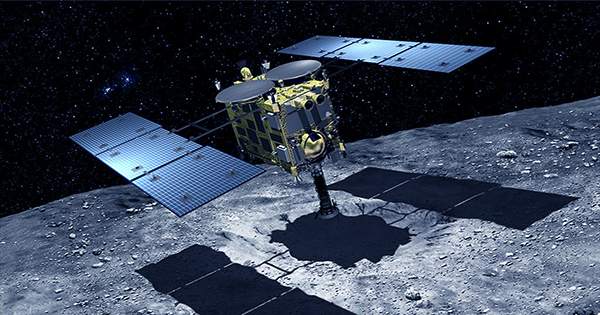Magnetic patterns found in meteorites can provide information about the dynamics of the early solar system. These patterns are believed to be remnants of the magnetic fields that existed in the protoplanetary disk, the cloud of gas and dust that surrounded the young sun and eventually formed the planets.
Scientists have developed a novel approach to look at the dynamics of the early Solar System by analyzing magnetites discovered in meteorites and taking use of the wave nature of electrons.
The magnetic fields associated with the meteorite’s component parts can act as a time capsule. By examining these magnetic fields, scientists can ascertain the probable occurrences that had an impact on the object and create a timeline of the occurrences on the meteorite.
“Primitive meteorites are time capsules of primordial materials formed at the beginning of our Solar System,” said Yuki Kimura, an associate professor at the Institute of Low Temperature Science at Hokkaido University in Japan who led the study. “To understand the physical and chemical history of the Solar System, it is crucial to analyze various types of meteorites with different origins.”
The majority of the meteorites that have been analyzed on Earth have come from the asteroid belt, which is situated between Mars and Jupiter. These resources are employed to investigate the features of the early Solar System. However, it becomes difficult to reconstruct events that happened outside of the asteroid belt in the Solar System.
Our results help us infer the early dynamics of Solar System bodies that occurred several million years after the formation of the Solar System, and imply a highly efficient formation of the outer bodies of the Solar System, including Jupiter.
Professor Yuki Kimura
In order to understand the dynamics of the outer Solar System immediately after the system began, the research team achieved great advances in this field. The report describes a novel method for examining the residual magnetization of particles in the Tagish Lake meteorite, which is thought to have formed in the icy outer Solar System. The method is described in the publication, which was published in The Astrophysical Journal Letters.
The method, along with numerical simulation, allowed the scientists to demonstrate that the parent body of the Tagish Lake meteorite formed in the Kuiper Belt, a region in the outer Solar System, some 3 million years after the formation of the earliest Solar System materials. The formation of Jupiter caused it to shift to the asteroid belt’s orbit after that.
The parent body was heated to roughly 250°C by radiogenic heating and an intense impact, which is thought to have taken place during the body’s transit from the Kuiper belt to the asteroid belt. This is when the magnetite was created.
“Our results help us infer the early dynamics of Solar System bodies that occurred several million years after the formation of the Solar System, and imply a highly efficient formation of the outer bodies of the Solar System, including Jupiter,” says Kimura.
The new technique, called “nanometer-scale paleomagnetic electron holography,” is capable of extracting high resolution information from the meteorite structure by using the wave nature of electrons to study their interference patterns, or holograms.
Thanks to this high-resolution technique, researchers who are trying to understand the early dynamics of the entire Solar System now have another crucial tool in their toolbox.
Armed with their new technique, the team hopes to apply it to more samples, including samples from an asteroid still in orbit around the Sun, called Ryugu.
Kimura detailed their ongoing research plan: “We are analyzing the samples that Hayabusa 2 brought back from the asteroid Ryugu. Our nanometer-scale paleomagnetic method will unveil a detailed history of the early Solar System.”
















